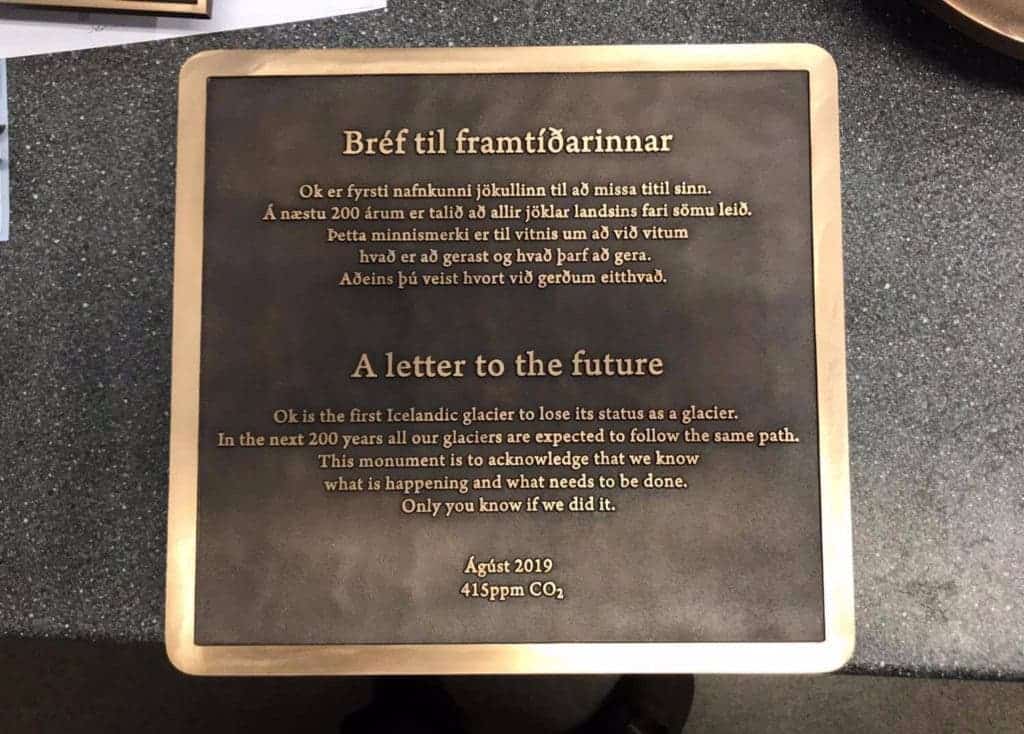Iceland’s first glacier lost to climate change will be remembered with a monument and a plaque soon to be unveiled at the site of the former glacier. The plaque’s message is a stern reminder that we know what is happening.

“Ok is the first Icelandic glacier to lose its status as a glacier. In the next 200 years all our glaciers are expected to follow the same path. This monument is to acknowledge that we know what is happening and what needs to be done. Only you know if we did it,” it reads.
The state of affairs is pretty clear: the Earth’s climate is heating up due to greenhouse gas emissions produced by human activity. Sure, there is plenty of debate among politicians, particularly in circles who have a lot to gain by not taking action against it, but climate change denial has no scientific credibility. Simply put, we know it’s happening, and we know it’s because of us.
This is why researchers from Rice University in Houston teamed up with author Andri Snær Magnason and geologist Oddur Sigurðsson and the Icelandic Hiking Society to install a monument recognizing the place of the former Okjökull glacier in Borgarfjörður, Iceland.
Ok, as the glacier is called (“jökull” being merely a suffix which means “glacier”) is officially the first iceberg we’ve lost due to anthropogenic climate change. Now, a plaque will be unveiled at the site of the former monument, along with a letter for the future. Engraved on the plaque is also “415 ppm” — the amount of carbon dioxide in the atmosphere reported in May.
“This will be the first monument to a glacier lost to climate change anywhere in the world,” Howe said. “By marking Ok’s passing, we hope to draw attention to what is being lost as Earth’s glaciers expire. These bodies of ice are the largest freshwater reserves on the planet and frozen within them are histories of the atmosphere. They are also often important cultural forms that are full of significance.”
Of course, melting glacier ice is but one of the major effects of climate change. Ok was the first, but it will certainly not be the last. As the climate warms, we will continue to lose more and more. Whether or not we take action to prevent catastrophic damage from being done remains to be seen.
Before the Industrial Revolution, carbon dioxide levels in the atmosphere were stable at 280 ppm. Today’s rate of increase is more than 100 times faster than the increase that occurred when the last ice age ended, growing steadily and showing no signs of stopping.
Burning fossil fuels such as coal, petroleum, and natural gas is the leading cause of increased anthropogenic CO2, with deforestation being the second biggest cause.


